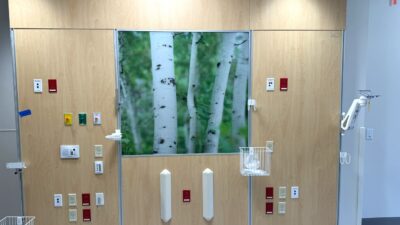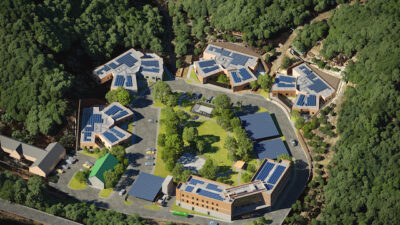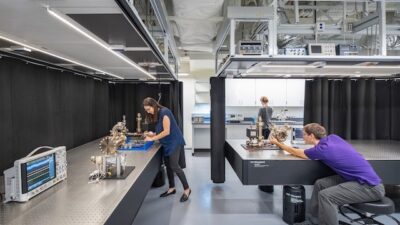The 2008 National Electrical Code (NEC) is scheduled to be released by the National Fire Protection Assn. (NFPA) at the end of September. This 51st edition of the model code incorporates nearly 400 changes from more than 3,500 submitted revision proposals to the current 2005 edition of the NEC. A quick review of the new proposed code changes reveals no major formatting changes from the previous...
The 2008 National Electrical Code (NEC) is scheduled to be released by the National Fire Protection Assn. (NFPA) at the end of September. This 51st edition of the model code incorporates nearly 400 changes from more than 3,500 submitted revision proposals to the current 2005 edition of the NEC. A quick review of the new proposed code changes reveals no major formatting changes from the previous edition.
The 2008 NEC will be available for subsequent adoption at the state and local levels by the authorities having jurisdiction. Once released, engineers should carefully review the code for applicability to their work and project types.
The new code further refines and clarifies various sections. As the transition to the 2008 NEC begins, here are some significant proposed changes as indicated by the NFPA’s Report on Proposals (ROP) and where they occur.
Definitions (Article 100)
Revised definitions, which apply throughout the NEC, indicate again the focus on understanding the issue of grounding:
-
Ground
-
Grounding (grounded)
-
Grounding electrode conductor
-
Grounding conductor, equipment
-
Bonding (bonded).
Of special note is the deletion of the term “grounded, effectively.” This definition has been deleted for being a subjective term that had no defined parameters for determining if something was or was not effectively grounded. New definitions added for this edition include:
-
Ungrounded
-
Neutral conductor
-
Short circuit current rating.
Requirements for electrical installations (Article 100)
The change here was to 110.26(c), Entrance to Working Space. The words “and egress from” are added to the previous title to become, “Entrances to and egress from working space.” This covers requirements for leaving the electrical work space, as well as entrance to a working space. The statement concerning large equipment described under 110.26(c)(2) was revised to reinsert the requirement that equipment must be more than 6 ft. wide—a requirement that had been deleted from the 2005 edition.
Also, with regard to wiring design and protection, the section of the ROP covering Chapter 2 contained in excess of 200 accepted proposals for revisions to the 2005 NEC. This highlights the importance of precise wording for this chapter. Some items of note include the following:
Branch circuits (Article 210)
• 210.8(A)(2) and 210.8(A)(5): A list of specified locations within dwelling units that require ground fault circuit interrupter (GFCI) protection for personnel has been modified. In the 2005 NEC, there were two exceptions allowing receptacles within garages, accessory buildings or unfinished basements to not require GFCI protection: if they were not readily accessible or if they were single or duplex receptacles for two appliances within a dedicated space. Both of these exceptions were deleted from the 2008 code, thereby requiring GFCI protection in all garages, accessory buildings and unfinished basements.
• 210.8(B)(2): This was revised to clarify that an office “breakroom” (defined as a non-residential kitchen) that has a sink and permanent facilities for food preparation shall have GFCI protection for personnel.
• 210.8(B)(4): The 2008 edition clarifies that, other than for dwelling units, all duplex receptacles outdoors are required to have GFCI, not just strictly in public spaces. The two exceptions will remain.
Grounding and bonding (Article 250)
• 250.8: Connection of grounding and bonding equipment. This existing subparagraph modifies and clarifies the permissible means of connections of bonding equipment by adding a list of permitted and not permitted means of connection.
• 250.14: Continuity of grounded conductor. This is a new subparagraph added to prohibit using a metallic enclosure, raceway or cable to maintain the continuity of a grounded conductor.
Wiring methods (Article 300)
As for wiring methods and materials, there were some clarifications and additions to chapter three, including:
• 300.10: Adds a new exception such that conduits in the bottom of open-bottom equipment such as switchboards, motor control centers and transformers no longer have to be mechanically secured to the equipment.
• 300.50(f): Adds a subparagraph requiring a warning ribbon over direct-buried cables that are more than 600 volts.
Conductors for general wiring (Article 310)
• 310.15(B)(2)(c): This section adds a new subparagraph to address where conductors or cables are installed in conduits exposed to direct sunlight on rooftops. These must have ampacity corrections made for increased temperature inside the conduit. This ampacity correction is to be made so that conductors or cables used in these locations will not exceed their designated operating temperature.
Receptacles, cord connections and attachment plugs (Article 406)
Significant changes to be aware of have occurred in Chapter 4 under Article 406 and Article 408:
• 406.8: Receptacles in wet or damp locations will be required to be listed for damp or wet locations, not just the enclosure. It will become effective on Sept. 1, 2011, in order to give manufacturers time to develop the devices.
• 406.11: A new subparagraph has been added that requires 15-amp and 20-amp receptacles in a dwelling unit to be tamper-resistant.
Switchboards and panelboards (Article 408)
• 408.4: This section has been revised to include the requirement to identify spare overcurrent devices on the circuit directory.
• 408.35: Number of overcurrent devices on one panelboard. The paragraph in the 2005 edition has been deleted and so has the limitation of 42 poles. The revised NEC will limit the number of devices in a panel to what has been designed and listed for.
Generators (Article 445)
• 445.13: Ampacity of conductors. Conductors associated with generators that must carry ground fault current must be sized per 250.30(A), separately derived systems, instead of 250.24(c), grounding of services.
• 445.19: Generators supplying multiple loads. This is a new subparagraph that permits a single feeder from the generator or paralleled generators to supply multiple loads to include emergency and standby loads, provided they terminate in a switchboard with individual disconnects for each of the loads.
Healthcare facilities (Article 517)
There are a number of clarifications specific to life safety in healthcare facilities in the new 2008 code:
• 517.26: The wording of this paragraph that was added in the 2005 edition has been revised to require only the life safety branch of the essential electrical system to meet the requirements of Article 700, Emergency Systems. This removes the requirement for the critical branch of a healthcare facility that serves patient care related circuits to comply with Article 700.
• 517.32(E): Adds the requirement for battery-powered lighting units at essential transfer switch locations, as well as an indicator that this wording is the same as found in NFPA 99.
• 517.32(c)(3): Adds new subparagraph to allow the mechanical equipment and controls required for effective life safety system operation to be connected to the life safety branch. This will allow the connection of smoke dampers and smoke control actuators initiated by the fire alarm system to the life safety branch.
• 517.43(A) and (B): Revised text to delete the need for delaying the connection of loads listed under this subparagraph to the critical branch of the essential electrical system.
Emergency systems (Article 700)
A number of emergency and standby system requirements have been revised, including the following:
• 700.9(D): Under circuit wiring for emergency systems, this text is revised to include fire protection requirements listed under 700.9(D)(1) and (D)(2) for feeders for essential electrical systems for hospitals and healthcare facilities.
700.9(D)(3): Adds a new subparagraph stating that generator control wiring installed between transfer equipment and the emergency generator shall be kept entirely independent of all other wiring and shall meet 700.9(D)(1). This addresses the issue that the generator start circuit should have the same protection as the emergency system feeder wiring.
Legally required standby systems (Article 701)
• 701.7(c): Automatic transfer switches. The text has been revised to require automatic transfer switches rated 600 volts AC and below to be listed for legally required standby use.
Optional standby systems (Article 702)
• 702.5: Capacity and rating. This paragraph was expanded to create two applications, one for manual transfer and a second for automatic transfer. This is an effort to address installations where automatic transfer equipment is being installed with generators that have a capacity smaller than the total load. These systems must have adequate capacity for the supply of all equipment intended for operation at any one time.



